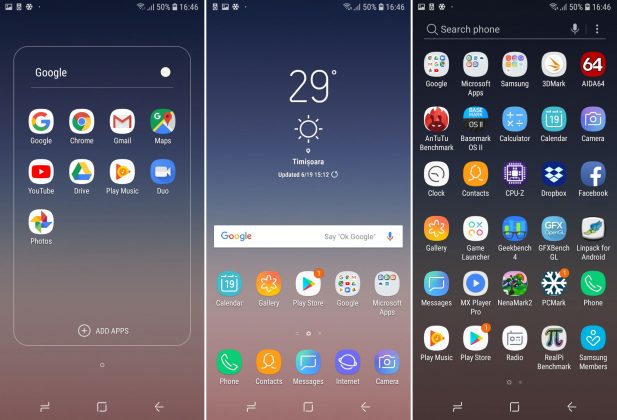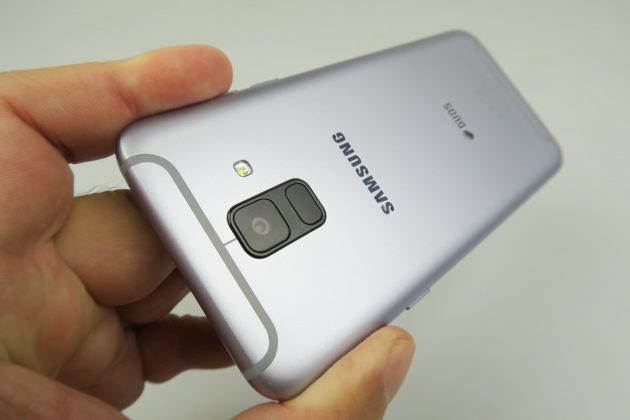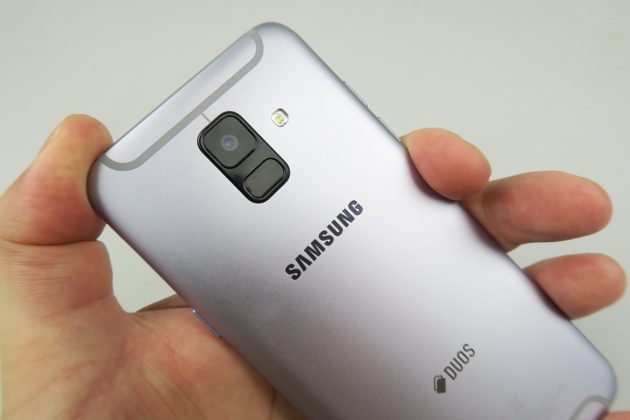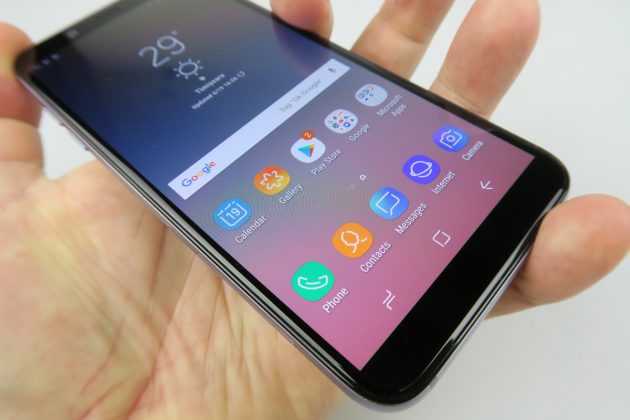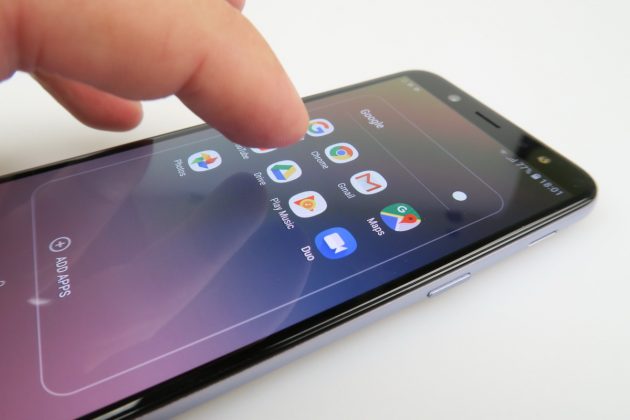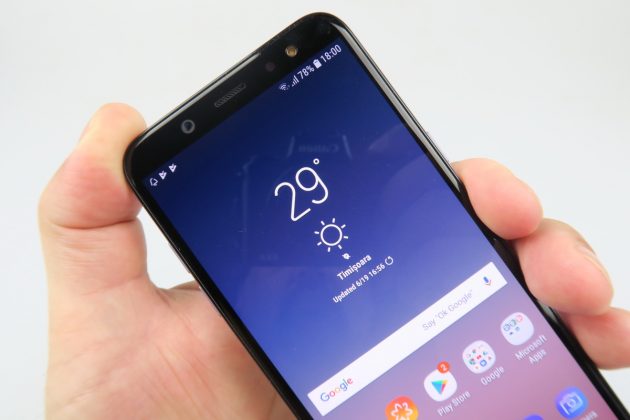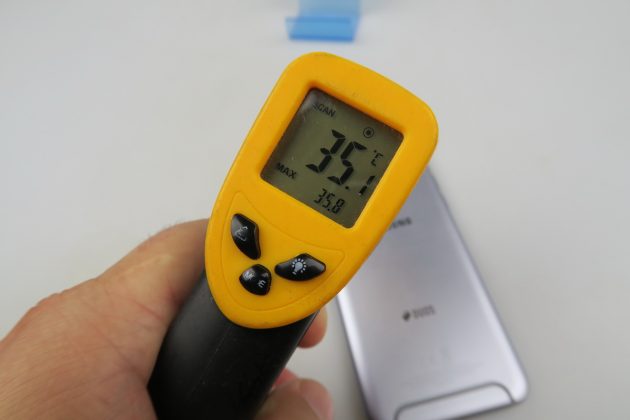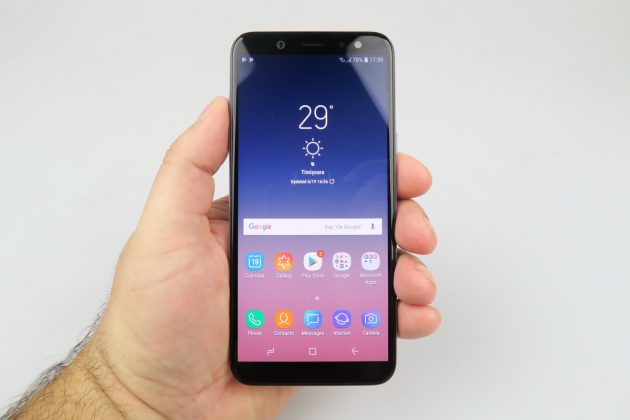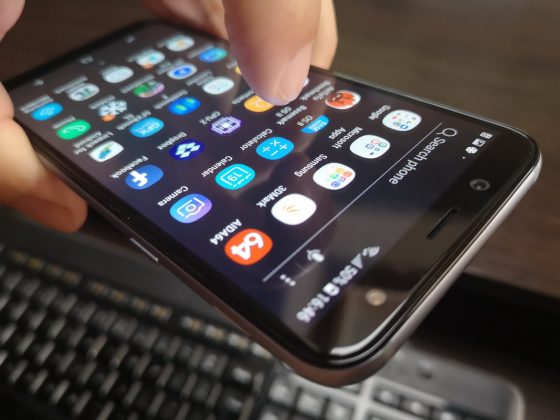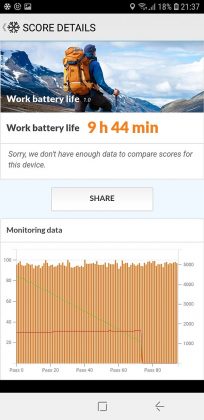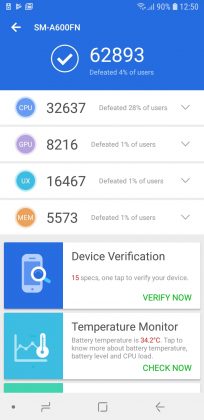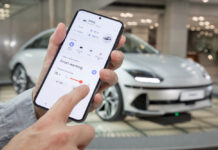Samsung Galaxy A6 (2018) has been unveiled earlier this summer and it will be seen by many as a sort of lighter Samsung Galaxy A8 (2018). It can also be seen as a covert Galaxy J6, posing as a Galaxy A6. Launched around May 2018, the handset has a cute metal body and it’s priced at around $300, maybe less. We have the Duos version, meaning it’s a dual SIM version and it’s available in black, violet or gold. Let’s see if it makes the Galaxy A series proud or not.
Design
Samsung Galaxy A6 (2018) is made of metal and it gets the antenna cutouts from the Galaxy J series. It’s got that iPad/iPhone feel of smooth and cold metal that’s been liked for so many years now. It’s a rather tall and long phone with a metal unibody design and a great grip. The button feedback is excellent and we’ve got great one hand usage, no problem. This handset is made of premium materials and it measures 7.7 mm in thickness, plus it weighs 162 grams.
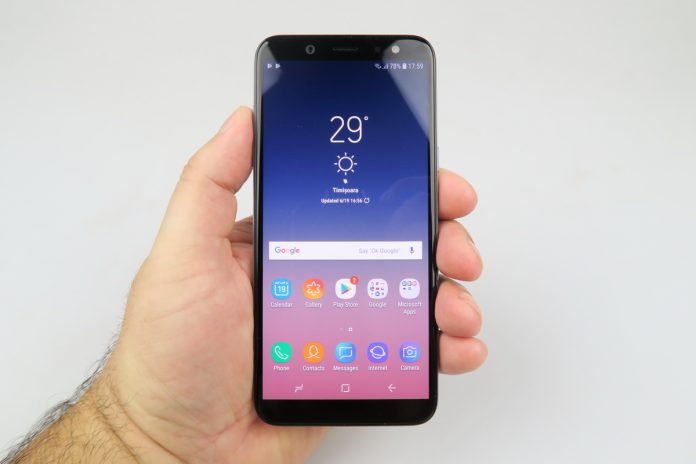
The smartphone packs a 5.6 inch screen and it’s great in size even compared to the Galaxy A8 (2018), that measures 8.4 mm in waistline and weighs 172 grams. That one also has a similar 5.6 inch diagonal. A very solid design overall, maybe with the antenna deigns not being so sexy by today’s standards.

Display
Samsung Galaxy A6 (2018) packs a 5.6 inch screen with a Super AMOLED panel and a 1480 x 720 pixel resolution, so it’s HD+. It shows 16 million colors and has a 18.5:9 aspect, being all trendy and tall. Leaving that aside we go to the actual viewing experience and we experienced vivid colors, great colors actualy and a solid brightness. The image was crisp when watching TV shows and videos, plus we had wide view angles and a deep black.
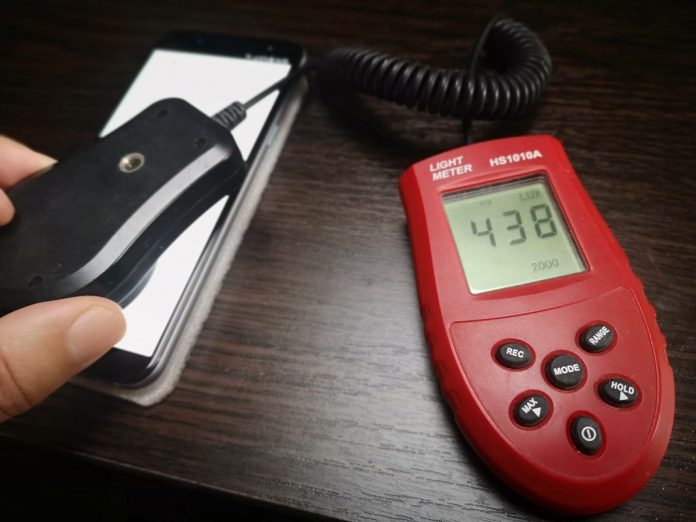
Contrast is also rather OK. Pixels have a Pentile Matrix setup and the brightness test with the luxmeter showed us 438 LUX. It beats Huawei 10 Plus, HTC U11 and Samsung Galaxy J5 (2017). It’s still below the Galaxy A5 (2017) and ZenFone 5. Settings are ample as usual for Samsung. We’ve got brightness, Auto Brightness, Blue Light Filter, font size, font style and screen zoom.
There’s also a Screen Mode with Adaptive Display, AMOLED Cinema mode and AMOLED Photo model, plus Basic. Color Balance is also here, with a cool/warm option and RGB sliders. But wait, there’s more. You can mess up with the layout, trigger the Easy Mode, use Full Screen apps and even mess with the icon frames. It’s a solid screen, but I would have loved to have a Full HD resolution, not just HD.
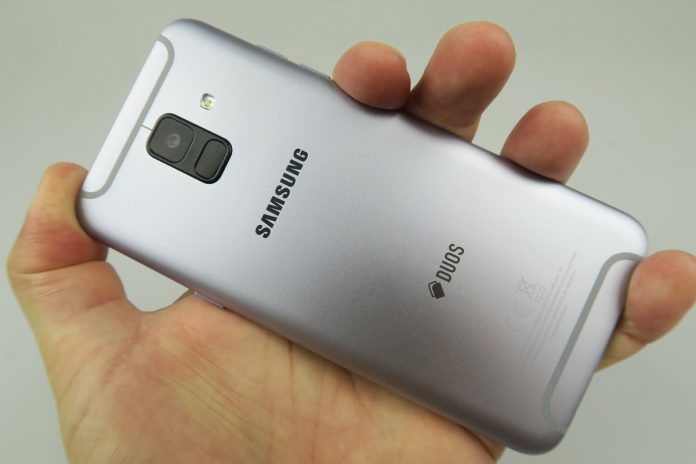
Hardware
We move on to hardware, which offers us the Exynos 7870 processor, which was also available on Galaxy J5 (2017), an octa core 1.6 GHz chipset. WE also have a Mali T830 MP1 GPU, 3 GB of RAM and 32 GB of storage, of which 22.1 GB are free to the user. There’s also a microSD card slot and moving to performance, there’s no lag here, whatsoever and even games like Riptide GP Renegade run in a pretty smooth way.
No matter how many apps we had opened, the device refused to freeze and drop performance. We also did an AnTuTu 6 test, which had us placed above LG Q6 and Nokia 6, but also below the Xperia XA and Motorola Moto M, as well as Huawei P9 Lite. We did AnTuTu 7 as well and got above the Nokia 6 and Bluboo S3, but also below the Xiaomi Redmi 5 Plus. GeekBench 4 is a more constant test and in the Multi Core sub test we beat the Galaxy J5 (2017) and Galaxy A3 (2017).
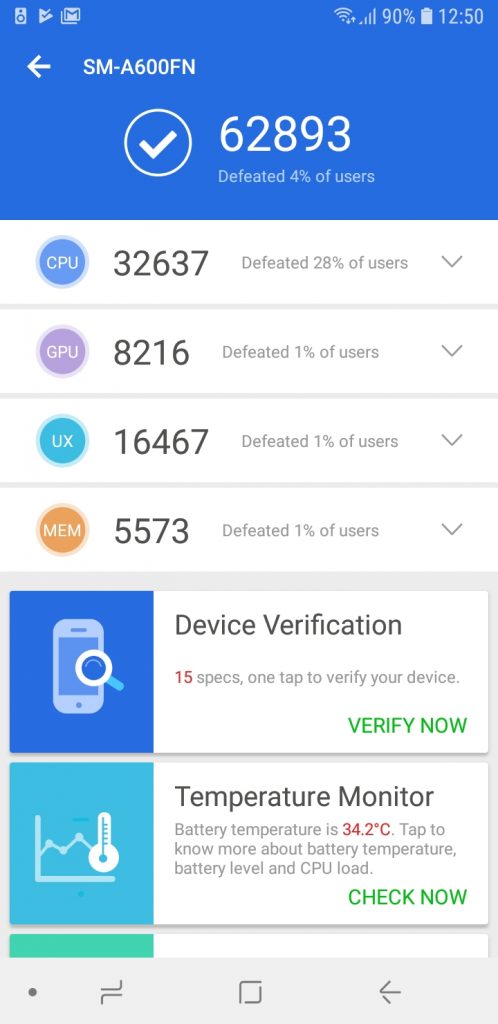
Samsung Galaxy A6 (2018) scored below the Xperia XA1 and ZenFone 3 in the same test. Graphics-wise things are decent, so we did Slingshot 3.0, beating the Galaxy A5 (2016) and Uhans S1, but scoring below the Galaxy A3 (2017) and Allview X4 Soul Lite. I would say the benchmarks were a bit on the low side, between the Xperia XA and Xperia XA1. It could fight the Galaxy A3 (2017) on par.
We also did a temperature test and achieved 32.4 degrees Celsius in GFXBench and 35.8 degrees in Ripide GP Renegade, so there’s clearly no overheat here.

Battery
Samsung Galaxy A6 (2018) packs a 3000 mAh battery, which on paper is supposed to offer up to 70 hours of music playback, or 13 hours of Internet usage on WiFi, or 16 hours of video playback. We of course did a video playback test, which brought us to 12 hours and 25 minutes, a rather good result. It’s better than the Sony Xperia XZ1 Compact, iPhone X and LG G6, which is no small feat.
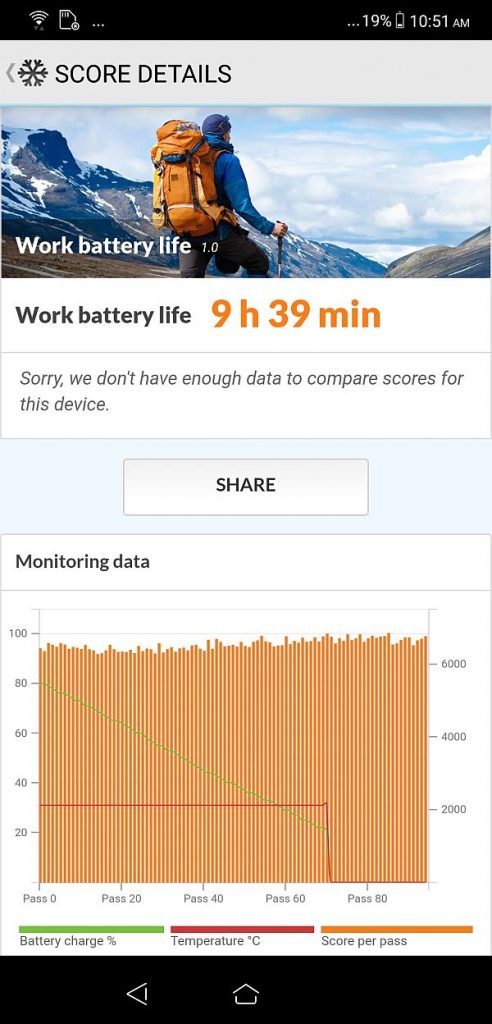
It did score less than the Nokia 7 Plus and Huawei P9 Lite 2017. By the way it’s the equal of the iPhone 7. PCMark, the continuous usage test saw us at 9 hours and 44 minutes, which is rather good. It also beats the Samsung Galaxy S7 Edge and Galaxy Note 8, but it scores less than Xperia XA2 and Samsung Galaxy J5 (2017) or the Galaxy A5 (2017). Charging takes a reasonable 1 hour and 50 minutes, which is rather OK and beats the Huawei P9 or Galaxy S7.
We also did a step by step charge and achieved 6% after 5 minutes, 16% after 15 minutes and 31% after 30 minutes. 60% were reached after one hour. Settings include Power Saving with modes like Off, Mid and Max. A good battery overall, perhaps better than expect.
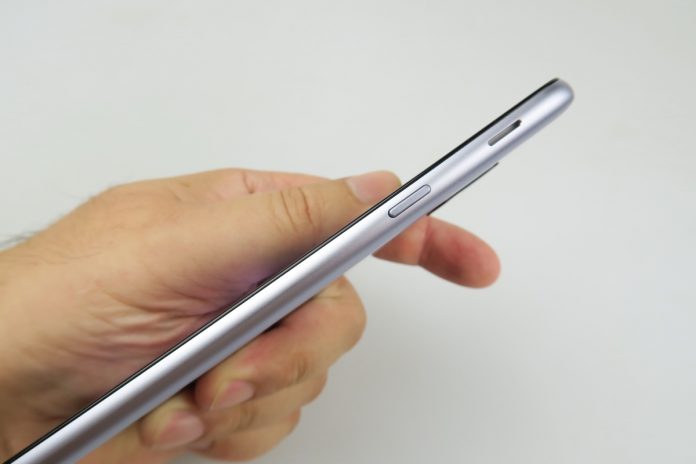
Audio
Samsung Galaxy A6 (2018) has the usual side placed speaker which we’ve seen on the Galaxy J lately. We used Play Music to … well play music and messed about with a fresh equalizer thanks to a Dolby Atmos section. It’s got genre settings, 9 channels to tweak, 4 knobs to turn, UHQ Upscaler, Tube Amp Pro and options like Concert Hall and Adapt Sound.
The listening experience featured a pretty loud sound, clear as well, an OK bass, warm voice and the device didn’t vibrate in an exaggerate manner. There was no distortion and we totally dug the experience. The bundled headphones are rather basic, generic, not very comfy, to be honest. I feel that they’re not quite Galaxy A material, more Galaxy J.

We also did some decibel tests, achieving 82.9 dBA with our typical acoustic sample, which is better than the Xperia XZ2 and Galaxy A5 (2017), but inferior to the Huawei Nova and Xperia XA2. We did a Riptide GP Renegade test and when playing the game we achieved 101.3 dBA which is rather solid and beats the Galaxy Note 8 and Galaxy A8 (2018). It’s no match to the ZenFone 5 and Moto E4 though.
FM radio is also here, in case you were wondering.
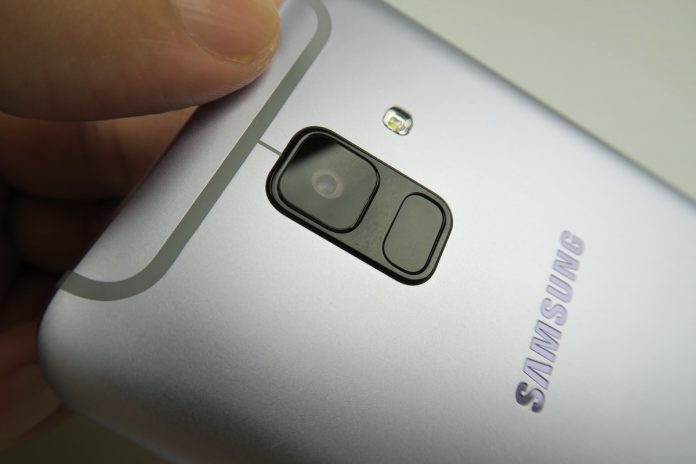
Camera
Time to talk camera. We’ve got a 16 megapixel shooter here with F/1.7 aperture and autofocus. There’s also a flash for both the back and the front camera. The front camera is actually a surprise, at 16 megapixels in resolution and the F/1.9 aperture is also not half bad. PDAF is also here, for the main cam. The camera app includes a Bixby Vision option, Stickers, Sports feature, Pro Mode, Panorama, Night and Sound and Shot.
The Pro mode is here as well, with options like ISO, exposure and white balance. A Selfie Focus has been included, basically Bokeh for selfies.

Time to check out the day time gallery of shots we took. It was an ultra sunny day, with a great sky at least on “film”. Colors were picture perfect and zoom was OK-ish, up to 3X or so, when it gets grainy. I feel that some shots were over processed, like I also found on the Galaxy A5 (2017). HDR was spot on, highlighting the darker portions of pictures.

We also had a solid green hue, even though there was also a slight burn that appeared every once in a while. I would say that we also have some flagship-worthy closeups and excellent clarity overall. The Panorama has a resolution of 11152 x 976 pixels. Selfies were OK, maybe a bit soft for 16 megapixels. The skin and hair had a pretty OK texture and the selfie Bokeh was OK-ish, but with a severely overexposed background behind me.

I feel that this phone beats the Galaxy J5 (2017) a bit and also some Moto G5 models from last year. It’s also superior to the Nokia 6.1. By the way, the device is not far from the Galaxy A5 (2017), considered a pretty solid phone back in its day. I expected a bit more from the 16 megapixel front camera, to be honest. Low light pictures featured a great flash, an OK clarity, crisp images and a decent brightness.

There was a bit of a purple hue, sometimes too purple to be enjoyable. I’d put this phone on par with a Huawei P9 Lite and it clearly gets bested by a Huawei P20 Lite, I’m sure about it. Street light halos are big and the device is better than the ZenFone 2, but somewhere below ZenFone 3, that’s the level. Oddly enough Samsung Galaxy A6 (2018) doesn’t feel superior to the Galaxy J5 (2017), which was slightly better at night.
On the video front of things, we caught some realistically calibrated colors, but also a shaky image and a pretty nice microphone. The details were rather poor when zooming in and the brightness was spot on. Some refocusing popped its ugly head at some point and at least we didn’t suffer from any burn during the day time capture. The microphone caught the surroundings in a pretty OK manner, voices too and music also.
Zoom was a mixed bag and clarity was decent. If you’re walking and filming it’s not the best idea in the world, as things get very shaky and distorted. The microphone and clarity are below the Sony Xperia XA2 and we’re in the area of an LG Q6, Huawei Mate 10 Lite here, certainly not a compliment. Still, this is 10% better than the Galaxy J5 (2017).
Low light video capture happens with an OK panning, nice clarity and poor zoom. The microphone was once again very good, but the picture was dark and shaky. Colors were OK, considering the conditions and all the hues and shades were well represented. Street light halos were not overblown, but we did experience some weird reflections. Overall I’d say that this feels more like a Galaxy J camera than a Galaxy A.
Browser
When it comes to the web browser, it’s good old Chrome, with a decent spring in its step. We also have a numeric row in the keyboard and the input was pretty smooth and comfy.

Connectivity
This is a dual SIM handset, with nano SIM card slots and the good news is that we get separate slots for the SIMs and microSD. There’s also 4G LTE here, ANT+, microUSB 2.0 and GPS, plus Glonass and Beidou. An audio jack has been included, as well as Bluetooth 4.2 and WiFi Direct. WiFi a/b/g/n is also here, plus NFC and the calls were loud and clear, we can’t complain.
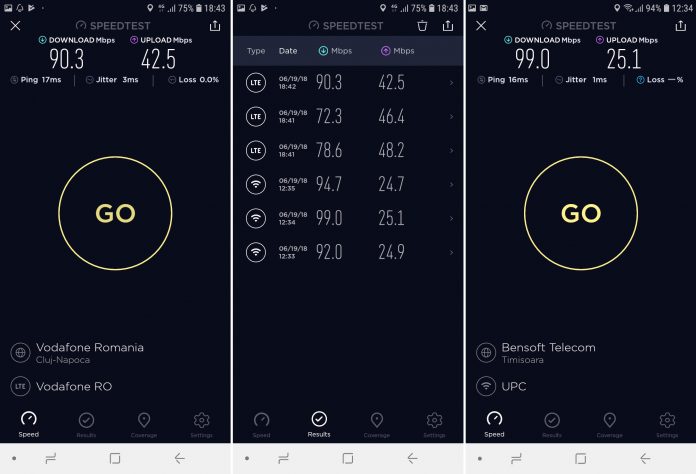
We also did a SpeedTest, reaching 90.3 Mbps in 4G downloads and 48.2 Mbps in uploads. The WiFi speeds were 99 Mbps in download and 25.1 Mbps in upload. I’d say they’re all OK minus the WiFi, which saw some 300 Mbps achievements recently on other phones.
OS, UI, apps
Samsung Galaxy A6 (2018) runs on Android 8.0 Oreo with Samsung Experience 9.0 on top. The experience feels very similar to what we saw on the Samsung Galaxy A8 (2018), even though that one debuted with Nougat. There are Bixby cards on the leftmost homescreen, serving as an aggregator for useful info. There’s the calendar, weather, music player, news, pedometer and more.

Plus we can add Linkedin, Places, Apps, Themes and others. The UI of the device is minimal, abstract even and slightly skeumorphic, well minus the icons. Multitasking is done via carousel and split screen and if you keep the homescreen pressed, you will trigger the wallpapers, widgets (all white and minimalistic), themes and settings related to grids, layouts and icons.
The dropdown bit has notifications and Quick Settings, as usual. Settings let you access stuff like one hand usage, Game Launcher, fingerprint scanner gesture and dual messenger. There’s also an SOS feature and Security feature, with face recognition. This one has a fast setup and a rather OK unlock time, but it’s not the fastest in the world.

The fingerprint scanner on the other hand has a 20 step setup and a fast unlock, but it’s too small to find comfortably at the back. Other things worth mentioning here are the Samsung Pass and Secure Folder. The preinstalled apps list has 40 apps, quite a few but there are also useful ones.
We’ve got Excel, OneDrive and PowerPoint here, plus Word, Linkedin, Bixby Vision, Samsung Health and Galaxy Apps. There’s also Notes and Smart Things available on the device. The first is inspired by the S Note on Galaxy Notes and the second is all about controlling smart home items.
This is the software experience in a nutshell, not unlike the Galaxy A8 one.

Verdict
Pros:
- good looks
- solid screen
- great battery
- fluid functioning, no lag
- good pictures and selfies
- solid microphone, actually very good
- good acoustics
- Oreo on board
Cons:
- underwhelming benchmarks
- last year’s CPU
- pricey
- just HD screen
- no stereo speakers
- no waterproofing
- no USB Type-C port
- no fast charge
- poor electronic stabilization
Samsung Galaxy A6 (2018) should have been branded and priced differently if it was meant to be a hit. The fair price should be $200 not $300 and it should serve as the follow-up to the Galaxy J5 (2017). It’s actually a small upgrade from it, with just 1 GB of RAM extra, better cameras, but only slightly and a bigger screen. I’ll admit the battery is good and you can take some nice pictures here, but you can also do that with a ton of other cheaper phones.
The Xperia XA2 has a similar price and it’s better. What this device needs is a price drop and fast. Till then you need to keep your options open.


